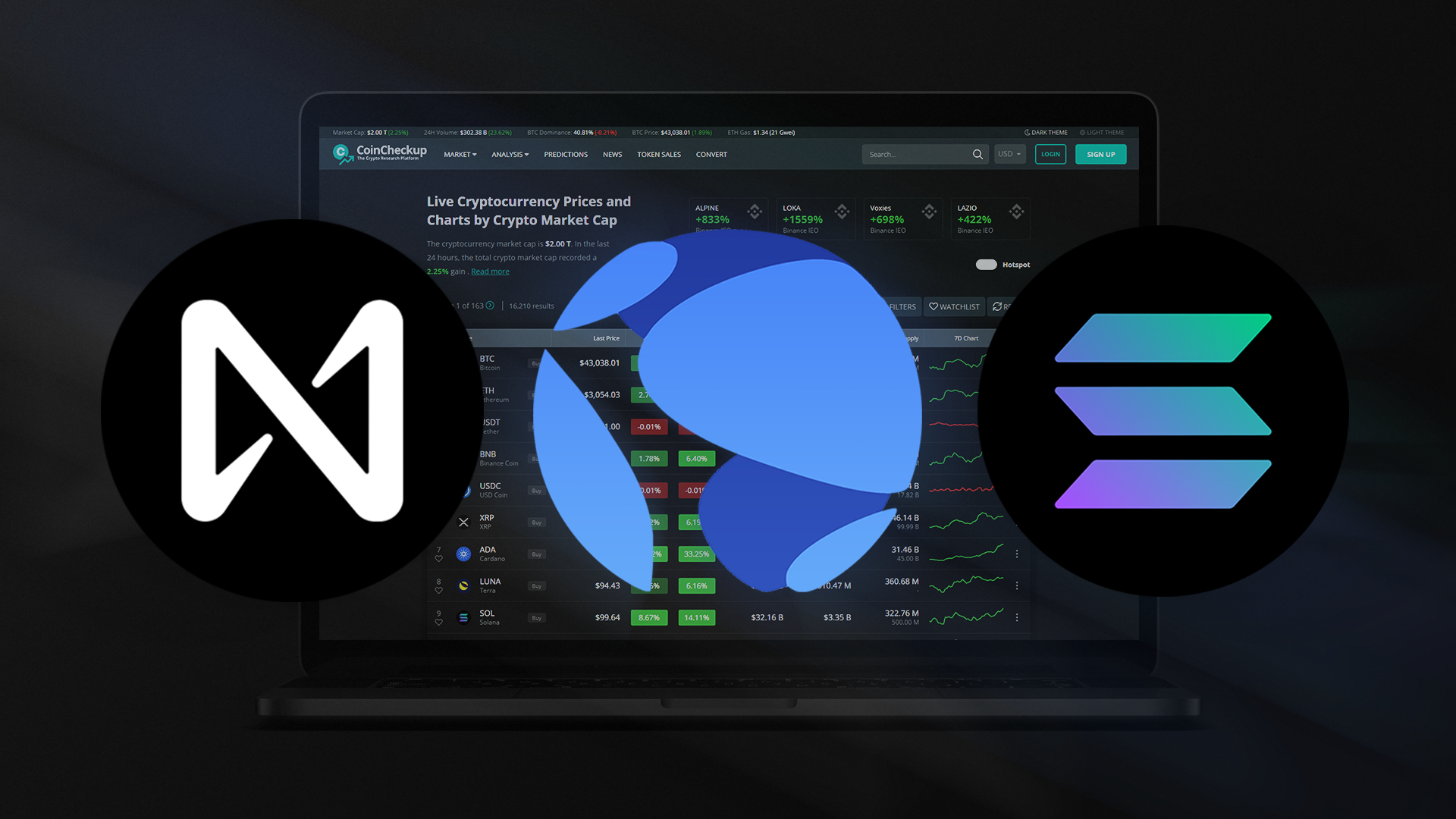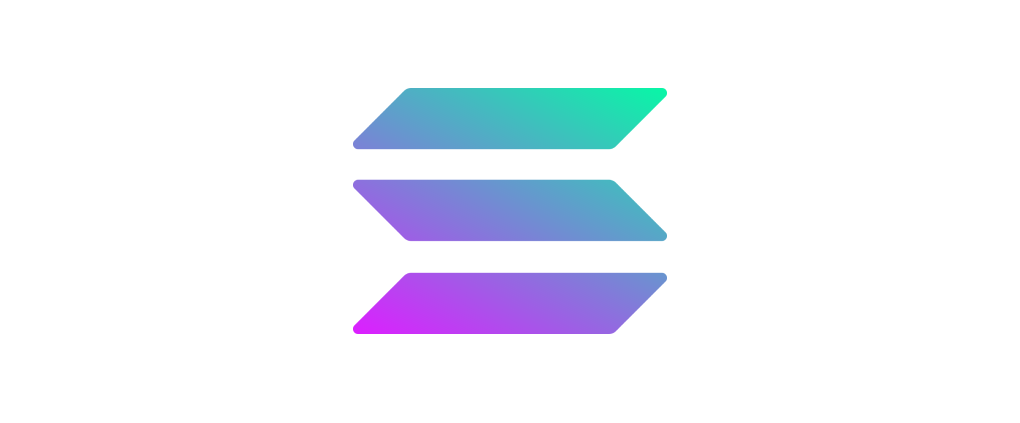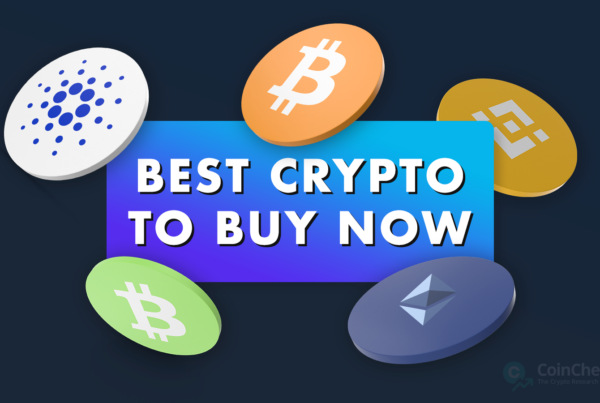
The total market capitalisation of the crypto market has retraced back to $2.05 trillion during Week 14. We, and pretty much every other crypto investor, hope that the downtrend is not going to continue in the following week. Nevertheless, by smartly picking which coins and tokens to invest into your portfolio can end up in the green, even when the general market is in the red. And this is where our weekly Top 3 Coins to Watch articles, where you can find fresh ideas on how to make the most out of the current developments in the world of cryptocurrencies, come handy.

3. Near Protocol (NEAR)
Near is a highly scalable and developer friendly Layer 1 Proof-of-Stake blockchain competing with Ethereum, Solana and similar networks. The company behind Near Protocol claims that you can create simple decentralized apps (dApps) on Near in just five minutes. In addition, Near Protocol utilizes Nightshade sharding mechanism, which allows the network to perform up to 100,000 transactions per second. However, there are currently not many decentralized applications deployed on its ecosystem. According to DeFi Llama, the total vale locked (TVL) in 6 protocols running directly on Near is only $340 million. Combined with Aurora, the Ethereum Virtual Machine (EVM) running on the Near Protocol blockchain, the Near ecosystem has a TVL of $1.17 billion.
Near Protocol raised $350 million in the latest funding round
Just three months after raising $150 million for the largest DeFi push in the history, the Near Protocol announced the successful competition of yet another funding round. This time Near Foundation, the organization behind the scalability-focused blockchain, raised $350 million to fund the platform’s adoption efforts and its development. The financing round was led by the Tiger Global hedge fund and saw participation from several notable VCs, including Dragonfly Capital, FTX Ventures, and Hashed. According to the company statement, the fresh capital will help Near increase “the number of regional hubs in key community centers across the globe.” This should bring the foundation’s goal, which is helping billions of people use decentralized technologies, closer to realisation. NEAR price jumped by 25% on the news and was at one point, on April 8, trading just 5% ($0.50) removed from its ATH price set in January this year. While this chain’s TVL remains low compared to other Layer 1 networks, it is obligatory to note that Near Protocol’s TVL has increased by over 180% in the last month. This incredible growth makes Near Protocol one of the fastest-growing DeFi chains in the space. In addition, NEAR climbed from 40th to 18th spot on the list of largest cryptos by market capitalisation in just 6 months… and we believe that this blockchain has not reached the end of its climb yet!

2. Terra (LUNA)
The Terra blockchain acts as the basis of the same-named algorithmically governed stablecoin platform. The Terra platform, which is built on the Cosmos technology and utilizes a Proof-of-Stake (PoS) consensus mechanism, was developed by a South Korea-based company named Terraform Labs. LUNA, which is the reserve currency of the Terra platform, has three key functions; these are ensuring the price stability of Terra stablecoins, mining Terra transactions through staking and providing incentives to blockchain validators. There are currently almost $28 billion worth of various digital assets locked in the Terra ecosystem.
Luna Foundation to add $100 million worth of AVAX to the UST reserve fund
On Thursday, April 7, Luna Foundation Guard announced it will add $100 million worth of AVAX to its UST reserve fund, after signing a deal with Avalanche. Terra ecosystem keeps funds in the UST Reserve to provide help maintain the UST peg against the USD, which is especially needed in times of sharp spikes of UST demand or sudden UST sell-offs. Nevertheless, Luna Foundation representatives also stated that the acquisition of $100 million worth of AVAX will “help strategically align the two ecosystems”. AVAX will thereby become the second non-correlated asset in the UST Reserve, the other being Bitcoin (BTC), which makes up most of the reserve value. In addition to the AVAX purchase, Luna Foundation has reportedly also bought 5,040 BTC last week for its reserve fund. The significant expansion of the reserve fund comes less than two months after its creation, which took place on February 22. Given how LUNA’s price jumped on the news of previous BTC deposits to the reserve, the addition of $100M worth of AVAX will likely have a similar impact on the price of LUNA. Interestingly, LUNA is currently the only cryptocurrency from the top 15 that is in the green on the year-to-date timeframe. Its success is attributed to the growth of the Terra ecosystem, along with the growth of the UST stablecoin and the setup of the already described UST reserve fund. TerraUSD (UST) currently has a market capitalization of $16.7 billion, which makes it the fourth largest stablecoin. However, TerraUSD has a solid chance of overtaking BUSD and becoming the 3rd largest stablecoin.

1. Solana (SOL)
Solana is a scalability-focused blockchain platform that supports smart contracts. Due to its high throughput of 65,000 transactions per second and absurdly low transaction fees (an average transaction on the blockchain costs just $0.00025), Solana is considered one of the strongest Ethereum competitors. Such a high blockchain efficiency is made possible by utilizing an innovative proof-of-stake consensus mechanism combined with proof-of-history (PoH) timestamping mechanism. Because of the reasons, Solana is very popular among various non-fungible token (NFT) projects and decentralized finance applications of all kinds. In addition, the project also backed by major investors such as Alameda Research, Polychain and Andreessen Horowitz that provide Solana Labs with more than sufficient funds for further development of the Solana blockchain.
Solana seeks to further expand its presence on NFT markets following OpenSea integration
After months of anticipation, OpenSea, the largest NFT trading platform, has finally integrated Solana. While OpenSea confirmed the rumours already a week before by publishing a video teaser, the official announcement of the Solana integration came on April 6.
The feature is currently in the beta phase, but once the integration goes alpha, Solana will become the fourth blockchain to be supported by OpenSea, joining the company of Ethereum, Polygon, and Klaytn. Even though Solana is one of the better-equipped blockchains to handle NFTs and their high trading volume, the NFT trading volumes on Solana are currently far smaller than those recorded on the OpenSea marketplace. According to data provided by DappRadar, more than the monthly NFT trading volume om OpenSea stands at $2.64 billion, while only $46 million worth of NFTs were sold on all Solana marketplaces combined in the same period. However, the OpenSea’s Solana integration is expected to boost trading activity of Solana NFTs and further solidify its spot among the quickest growing Web3 ecosystems. Nevertheless, Solana’s native currency – SOL, is changing hands at slightly less than $115, which is still 56% less than the coin’s ATH price of $260 achieved in November 2021. Do you think SOL can near in on its ATH because of an NFT market explosion?



